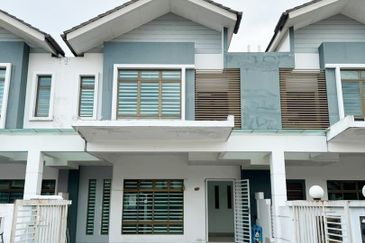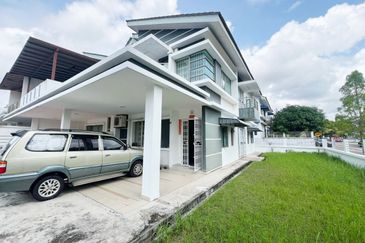Having his company’s proposed listing on Bursa Malaysia put on hold because of “uncertain market conditions” is not something which fazes Paul Ow, director of property development and construction outfit Gabungan AQRS Bhd. Instead, the group is pressing ahead with its expansion plans to spur the company on the path to becoming one of the country’s leading contractors and developers.
“We are going on an expansion programme. We want to put ourselves on the road map and be recognised as a reputable contractor. We also want a reputation as a good property developer not in terms of size, but in terms of quality products and timely deliveries,” says Ow, who co-founded the company.
As part of the proposed listing exercise, Gabungan AQRS will acquire the entire paid-up capital of four building, civil engineering, construction and property development companies — Gabungan Strategik Sdn Bhd, Pembinaan Megah Ikhlas Sdn Bhd, Motibina Sdn Bhd and AQRS The Building Company Sdn Bhd (AQRS) — via a share swap worth RM73.38 million.
Previously known as Damansara Residences Sdn Bhd, AQRS the Building Company was established by Ow and executive director Ng Kit Heng in 2001. AQRS’s (pronounced “Acres”) first development consisted of 92 semi-detached homes in Section 9, Kota Damansara, Petaling Jaya. This was followed by a commercial development dubbed Bistari De Kota in Section 3, Kota Damansara. The company then launched Contours in Melawati Heights in 2010, comprising 41 units of twin courtyard villas situated in a gated and guarded freehold development.
According to news reports, Gabungan AQRS had postponed its September listing due to accounting queries by Securities Commission Malaysia (SC), but Ow insists this is not the case. “We decided to postpone the listing because of uncertain market conditions. Considering our listing was slated for September, it would have been smack in the middle of a blood bath with the uncertain market conditions and worsening eurozone debt crisis. We may be able to see a bit clearer soon and I’m fairly upbeat the market will recover,” he says.
Ow, who is also an executive director at AQRS, says the group has to consider executing the listing exercise carefully.
“It is a situation where we need to engage carefully. Once you attempt the exercise again and then retract it, people will say you are lacking in confidence,” he asserts.
“We take the listing exercise very seriously. We believe that as directors of a listed company, we have a duty to the shareholders, minority or otherwise. We conduct ourselves with the highest degree of integrity,” he adds.
Ow says building up the group’s reputation and size will enable it to bid for larger projects. “As a private company, there is always a limitation. The government has a requirement for developers to be of a certain size when bidding for contracts. If we don’t list on the Main Market, our growth will be stagnant.”
In terms of property development, Ow feels that “the listing gives stronger credibility to AQRS The Building Company as a property developer from the point of view of size as well as its strengths in execution of projects, and of course the perceived financial strength that comes with being a listed company”.
As for its construction business, one of the projects that Gabungan AQRS has its eyes on is the proposed mass rapid transit (MRT) project in the Klang Valley. “We will try to bid for some of the MRT construction activities as the general construction for the project is in excess of RM15 billion. If we don’t get to participate even as a sub-contractor, I would be a little disappointed. This will be part and parcel of our ongoing book building,” says Ow.
The Altium
Even though the group is focused on its proposed listing, it is also currently occupied with a newly launched development called The Altium. Developed by AQRS, The Altium is nestled on 2.66 acres of leasehold land in Damansara Perdana and overlooks the Lebuhraya Damansara-Puchong (LDP), adding connectivity to its appeal.
 The Altium is a green development made up of three components: The CEO Suites, The Pulse and The Prime. The Altium has a GDV of RM300 million.
The Altium is a green development made up of three components: The CEO Suites, The Pulse and The Prime. The Altium has a GDV of RM300 million.
The CEO Suites is a SoVo (Small Office Versatile Office) project with 138 units housed over 12 levels offering 161,243 sq ft of office space with unit sizes of 612 to 1,041 sq ft, at prices ranging from RM537,430 to RM891,411. The Prime is a corporate office building that sits on 272,682 sq ft of land with an intergrated communal infrastructure — all within its 21 levels. The corporate offices range from 8,221 to 12,000 sq ft and purchase prices range from RM7.8 million to RM11.4 million.
The Pulse is a three-tiered, 30,128 sq ft nature-infused space to be used for retail and F&B, which the developer is retaining for lease.
About 60% of The CEO Suites — expected to be completed in the third quarter of 2014 — have been sold.
Ow believes that to maintain a development’s exclusivity, the developer must have a foothold in the project. This means the developer has to monitor the entire process, otherwise “we would just be leaving it up to fate and that is something we cannot do”.
He cites the example of The Pulse, one of the key components of The Altium project. Ow says it should be kept at a certain level of affluence.
“If we weren’t managing it, it could deteriorate to a state other than the vision that we have for it. Personally, I would enjoy the occupancies of nice little Japanese restaurants, fine dining with a few anchor tenants that will do our vision justice. Imagine if it became a hub for rowdy pubs. Our buyers would claim that we did not keep to our word. We really do need to go in and manage it ourselves,” he adds.
At The Prime, AQRS will be occupying four floors as its corporate office. “Imagine the parent company having an address in that location and also managing the building. It surely serves our purpose,” he says.
Ow states that the commercial activities generated by existing developments in the area add value to The Altium. “I look at the area and consider myself lucky. If you were to build a commercial premise in an area that does not have commercial activity, you would be quite worried. We are quite grateful that Mammoth Empire Holding Sdn Bhd is building quite a large complex behind us and also across the road. This just means that in the next 5 to 10 years, Damansara Perdana will have the potential to replace Mutiara Damansara as a hub of commercial activity,” Ow offers.
Mammoth Empire acquired two land parcels totalling 26.8 acres in Damansara Perdana from MK Land in January this year, adding to its ongoing developments in the vicinity — Empire City, a 23-acre integrated lifestyle commercial development, and Empire Damansara, a mixed-use development.
“From the investors’ point of view, it’s rewarding to see more and more people coming into the area and building more noteworthy developments. Since Mammoth Empire has sold off its units, technically, it is no longer my competitor,” Ow says.
On the demand for SoVos in the area, Ow says: “We are not worried about the take-up because we only have 138 units for our CEO Suites. We already have 80 buyers lined up and many more coming back, which amounts to 60%.
He remains optimistic as companies are beginning to see rental as a means of generating recurring income.
Opportunities in Johor and Penang
Having established a foothold in the Klang Valley, Ow is looking beyond the country’s most affluent region towards Johor and Penang for more development opportunities. “Initially when we took the piece of land in Permas Jaya, there was an intention to just build shops and sell,” says Ow, referring to the seven-acre plot in Taman Permas Jaya, Johor Baru, on which it plans to build a hybrid neighbourhood mall with an estimated GDV of RM120 million.
“We engaged an architect and came up with some very pleasant ideas for the project. We thought about a neighbourhood convergence point so we added features that were beneficial for the residents such as areas for a flea market and cultural events. The top floor will host a badminton court and squash court.
“After much deliberation, we decided that it would be a retail podium with small shops veering towards something like Centerpoint in Bandar Utama that has its very own tuition centres, dental clinics and specialist shops along with small-scale boutiques for the needs of the neighbourhood,” Ow explains, adding that like The Altium, AQRS will manage the commercial centre.
AQRS is also planning to build several serviced apartments that will meet the government’s My First Home Scheme aspirations and which will not go above the RM300,000 mark on the Taman Permas Jaya land in Johor Baru.
Another tract acquired by AQRS is in Penang, along the North-South highway. The 16-acre freehold land is situated about a kilometre from the interchange after exiting the Penang bridge in Seberang Prai. “We bought the land because we feel it has potential. We don’t want to rush in rolling out projects for the Penang land just yet since AQRS is already rolling out one or two projects at hand and do not want to suffer from indigestion,” Ow says.
The land is for commercial purposes but the company has yet to decide what it plans to do with it, he adds. “We can do specialised retail or we can do something that complements Autocity in Juru, Seberang Prai Tengah,” says Ow, adding that nearby Bukit Mertajam is also experiencing a surge in demand. He “foresees that it will only be a matter of time before we roll out plans for that parcel of land”.
Demand remains resilient
Not surprisingly, Ow is optimistic about the property sector’s outlook as Malaysia has one thing in its favour — the fact that it is a growing nation. “Take Australia for instance. It’s an ageing nation, unlike Malaysia’s young population. We do have enough land to expand and the opportunity for property development is not just within 30 to 40 years but actually in the longer term.”
Irrespective of the cycles and shifts in demand, Ow says the demand for property is still evident in Malaysia. He cites the example of the Baby Boomer generation (those born between 1945 and 1965) who not only bought properties for themselves but in the later years, are also buying homes for their children.
Ow believes Malaysians still retain a large amount of cash for investment purposes.
”Liquidity is prevalent in the medium to high-net worth community that remain hungry for good investments,” he says.
On the impact of the current global bearish market conditions, Ow says foreign investors are getting jittery and several small market cap companies have suffered because foreign investors are selling their shares in a bid to avoid a backlash from their overseas investments.
“Of course it will dampen the spirit of business at large, but we are fortunate our market trends do not fully mirror overseas markets. We went through the subprime crisis relatively unscathed because of our economic measures.”
Ow notes that the conventional property cycle has become shorter. “People talk about bubbles bursting but if you look at the traditional trend of the property cycle, it used to be 10 years. However, now it’s down to two years. If there was an up and down, the cycle would only last for a good two years.”
“At the end of the day, we are in a country that still has a growing demand for good properties. In a nutshell, our so-called bubble is hardly an issue that we need to place too much emphasis on,” Ow says.
{jcomments off}
This article appeared in City & Country, the property pullout of The Edge Malaysia, Issue 884, Nov 14-20, 2011
TOP PICKS BY EDGEPROP

Seksyen 8, Kota Damansara
Kota Damansara, Selangor
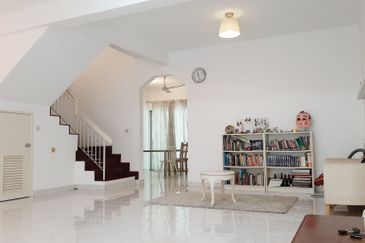
Seksyen 5, Kota Damansara
Kota Damansara, Selangor

Bandar Kinrara 5
Bandar Kinrara Puchong, Selangor

Bandar Kinrara 5
Bandar Kinrara Puchong, Selangor
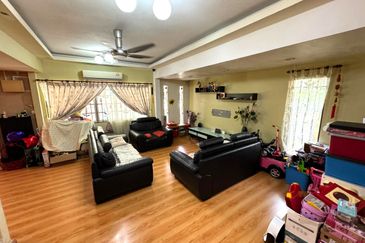
Bandar Kinrara 5
Bandar Kinrara Puchong, Selangor

Bandar Kinrara 5
Bandar Kinrara Puchong, Selangor

Bandar Kinrara 2
Bandar Kinrara Puchong, Selangor
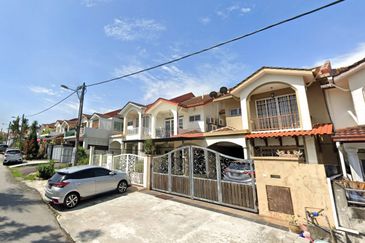
Bandar Kinrara 5
Bandar Kinrara Puchong, Selangor
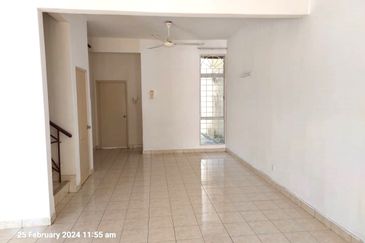
Bandar Kinrara 5
Bandar Kinrara Puchong, Selangor
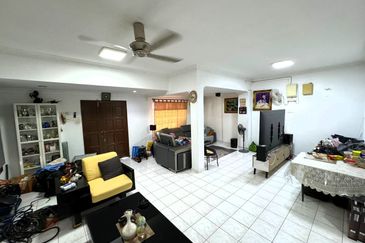
Bandar Kinrara 5
Bandar Kinrara Puchong, Selangor

Bandar Kinrara 5
Bandar Kinrara Puchong, Selangor
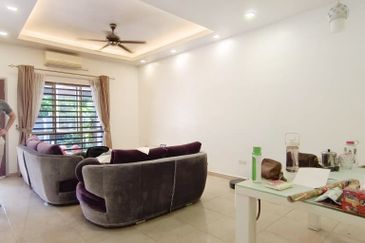
Taman Nusa Sentral
Iskandar Puteri (Nusajaya), Johor

Pangsapuri Sri Ilham, Bandar Baru Seri Alam
Masai, Johor
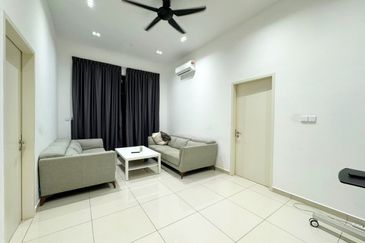
Plenitube Harp @ Taman Desa Tebrau
Johor Bahru, Johor





